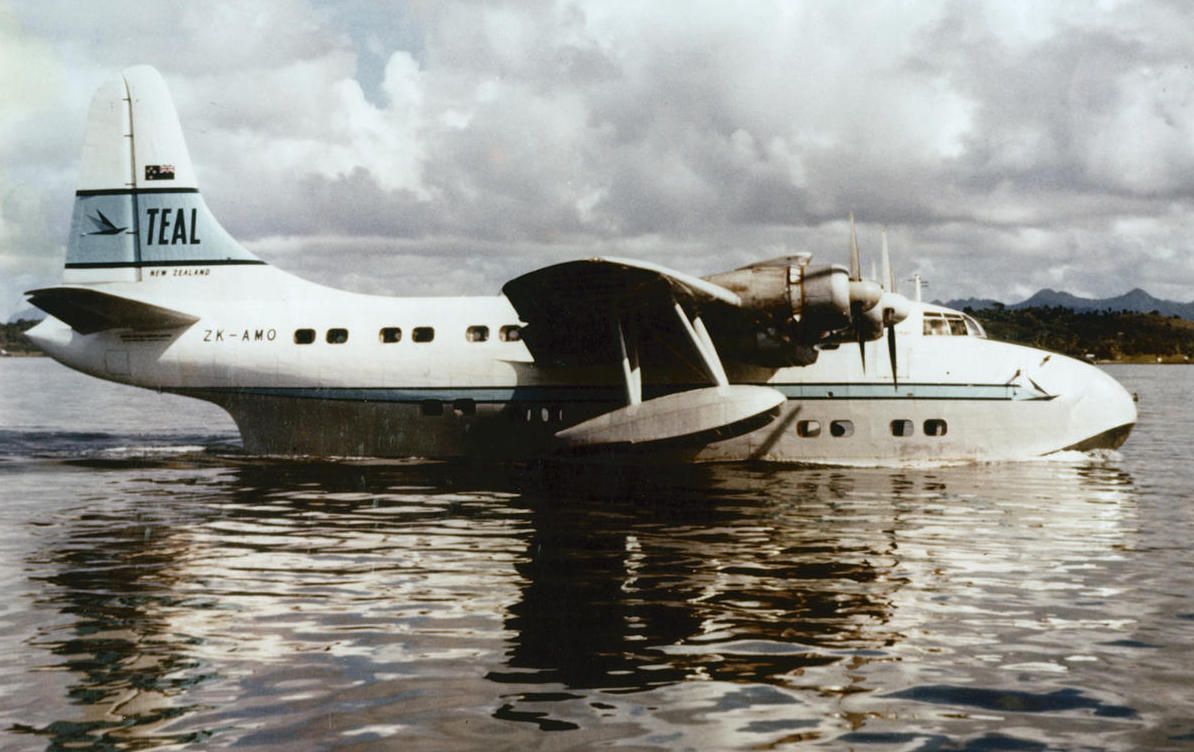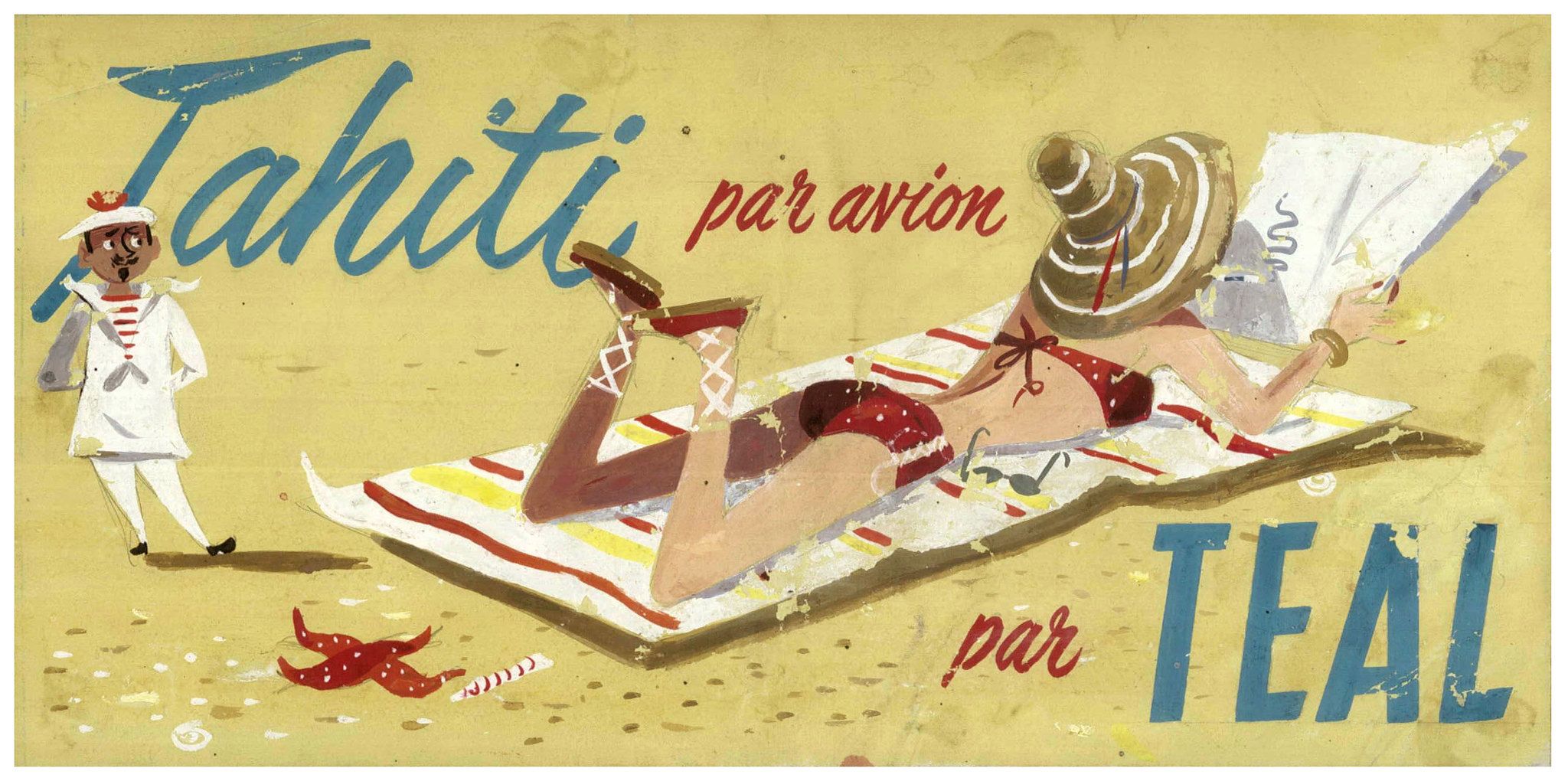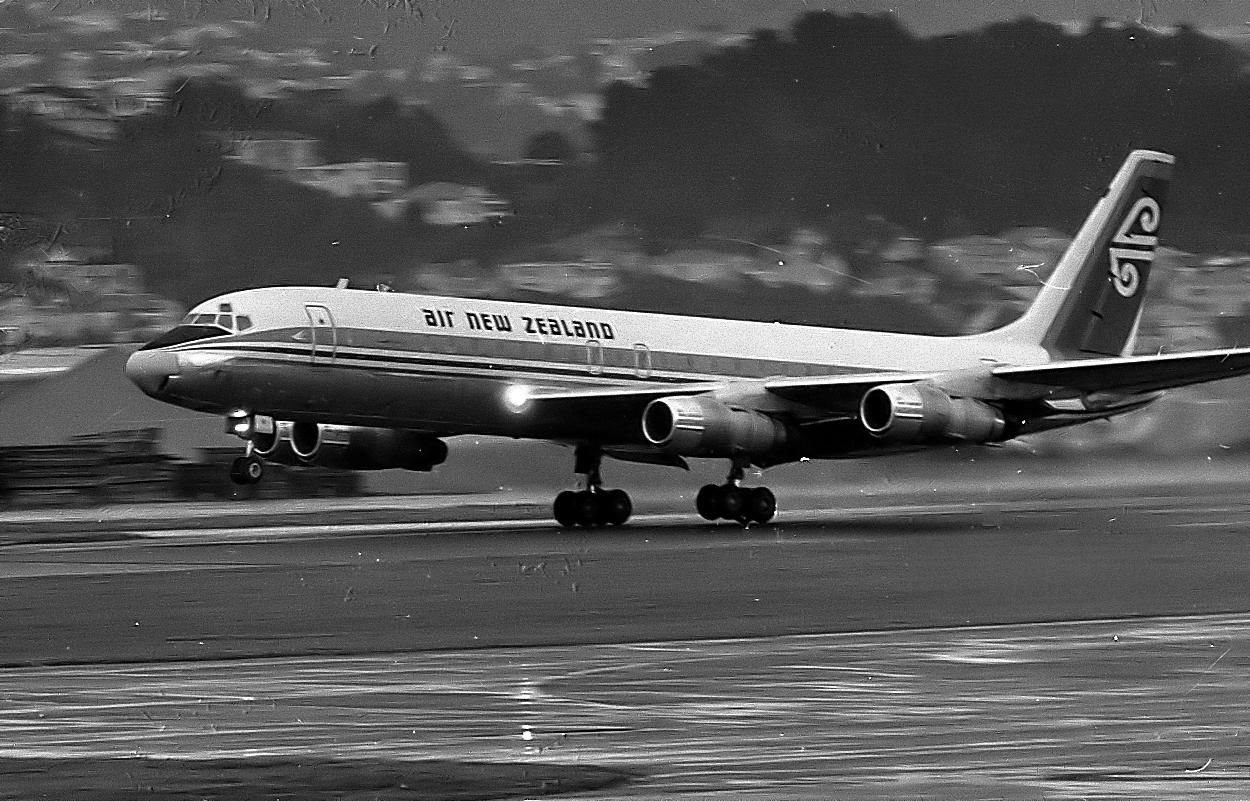Back on April 10, 1940, an agreement was signed in London between the United Kingdom, Australia, and New Zealand. The "Tasman Sea Agreement" was designed to create an airline to fly to transport mail, passengers, and cargo across the Tasman Sea between Australia and New Zealand. The airline was named Tasman Empire Airways Limited (TEAL) and was the forerunner of New Zealand's national flag carrier Air New Zealand.
Shares in the new airline were split between The New Zealand Government, which owned 20%, Union Airways owned 19%, Qantas owned 23%, and the British Overseas Aircraft Corporation (BOAC) owned 38%.TEAL's first flight was between Auckland and Sydney on April 30, 1940, when Aotearoa, one of TEAL's two Short S.30 flying boats, delivered mail to Sydney en route to England. The mail got handed over to the Empire Air Mail Scheme operated by Qantas/BOAC for transportation to England in Sydney.
The Horseshoe route
The first airmail route between New Zealand and England only lasted six weeks following Italy entering WWII. With Italy now in the war, it was impossible to get airmail across the Mediterranean Sea. A solution to getting mail to England was found when the British Government came up with "The Horseshoe route." Using flying boats, the mail would depart Sydney for Singapore-Cairo-Durban, then from South Africa, BOAC Short Empire C Class S23 and S33 flying boats would deliver the mail to England.
After operating a weekly return flight between Auckland and Sydney TEAL upped the number of flights to three a fortnight. It also opened up a link with the United States using Pan Am flight between Auckland and San Francisco. However, these flights were stopped following the Japanese bombing of Pearl Harbor on December 7, 1941. TEAL flew 130 trans-Tasman flights carrying 1,461 passengers during its first year of operations. By 1944 TEAL had increased flights between Auckland and Sydney to three return flights per week.
Tasman Empire Airways Limited begins new routes
Following the success of the Auckland to Sydney, flights between Wellington and Sydney began on October 3, 1950. A month later, TEAL chartered a British Commonwealth Pacific Airlines DC-6 and used it for a 6hr 35-minute flight between Christchurch and Melbourne. In 1954 a new DC-6 was added to TEAL's fleet and began flying from Christchurch to Sydney. Flights to Brisbane between Auckland and Christchurch were added to TEAL's route map in 1959.
Wanting to fly from Auckland to Tahiti, in 1951, TEAL took over the New Zealand National Airways Corporation Pacific Island flights from Auckland to Nadi (Fiji), Faleolo (Samoa) and Aitutaki (Cook Islands). With the Tahitian capital of Papeete not having an airstrip, TEAL decided to use a Catalina ZK-AMP flying boat for the flights with a stopover at Suva, Fiji. On September 16, 1960, TEAL flew its final Coral route flight ending one of the world's longest long-range flying boat flights.
Stay informed: Sign up for our daily and weekly aviation news digests.
TEAL becomes Air New Zealand
One of the things which were unique to the TEAL trans-Tasman and later Coral route flights was that the food onboard was cooked from scratch. Still reflecting the war, TEAL's uniforms had a military look, which gave the impression that the crew could handle any situation. Following the end of the war, women who had trained as nurses were appointed to the flying boat crews with the airline, believing that a nursing background would be an asset when coping with an onboard emergency.
In 1961, TEAL introduced stewardess uniforms that French haute couture specialist Christian Dior designed.
In 1961 the New Zealand Government bought out Qantas's share in TEAL, making it a 100% New Zealand Government-owned airline. On April 1, 1965, Tasman Empire Airways Limited was rebranded as Air New Zealand at the same time as the airline was preparing to enter a Douglas DC-8 into service.



